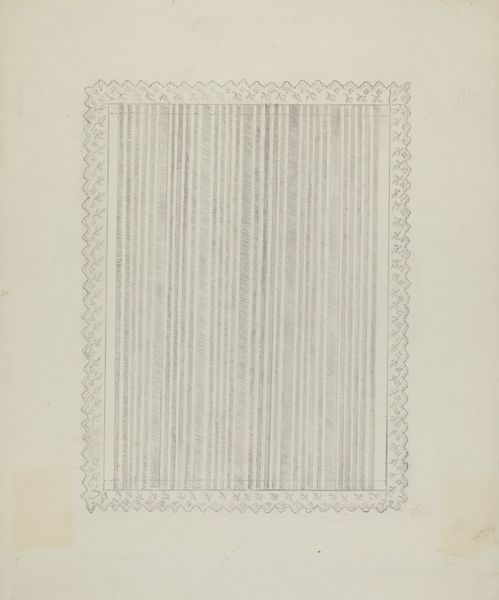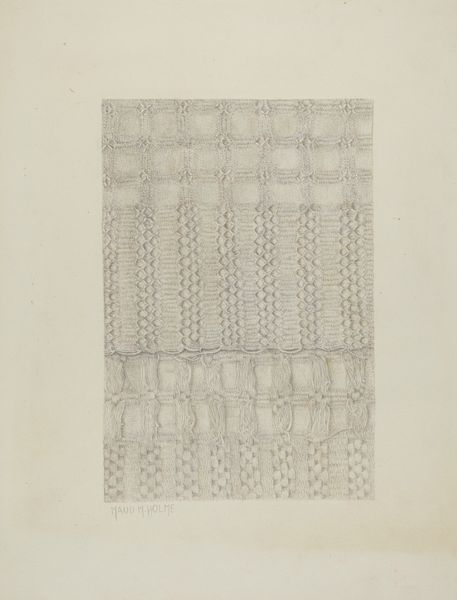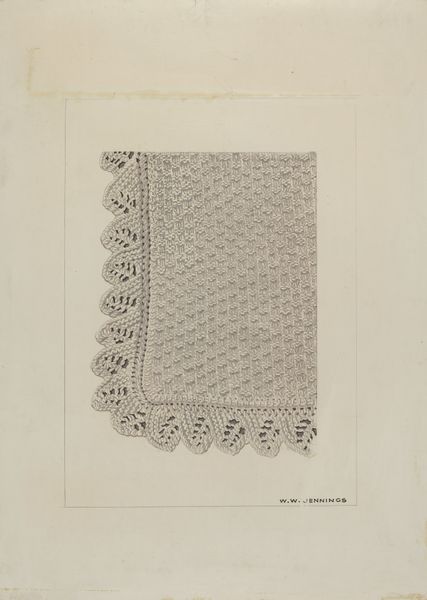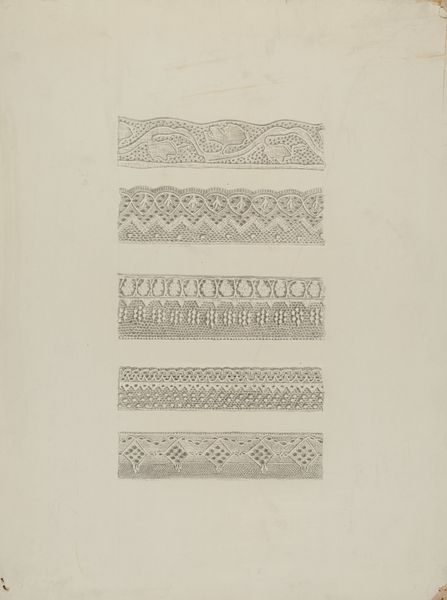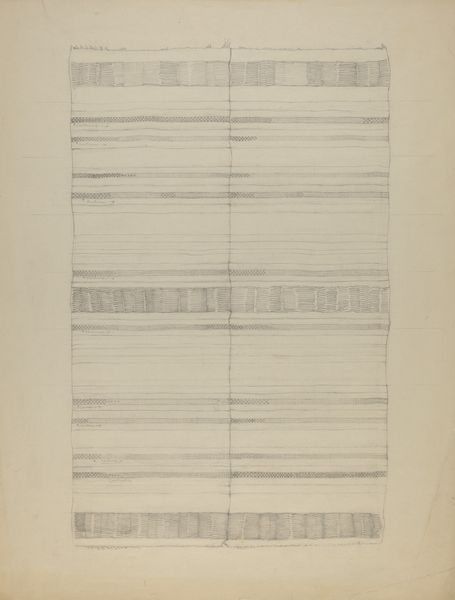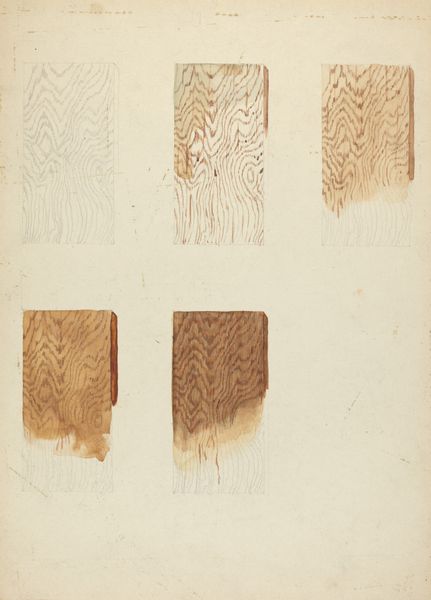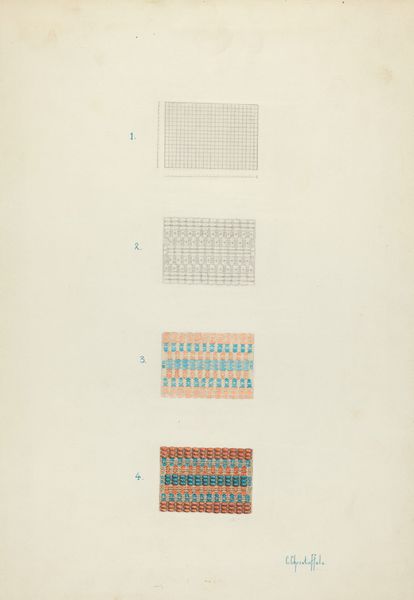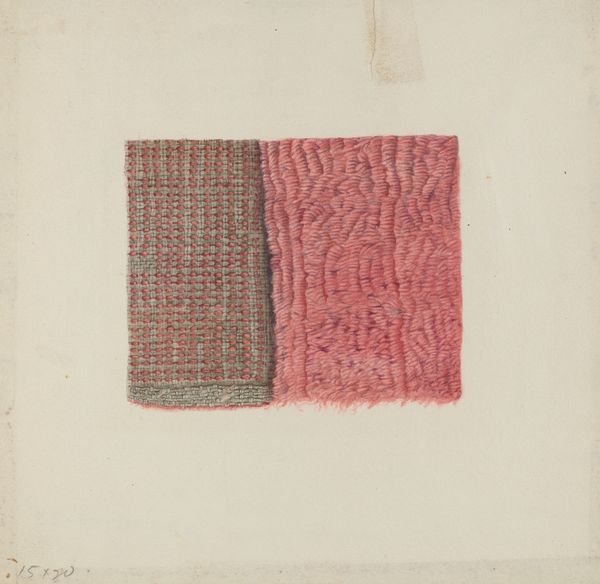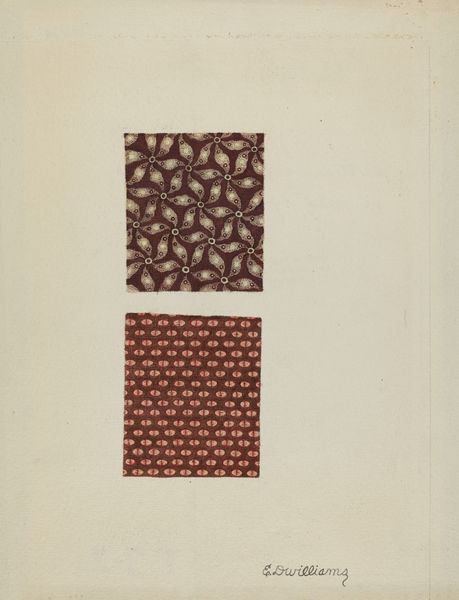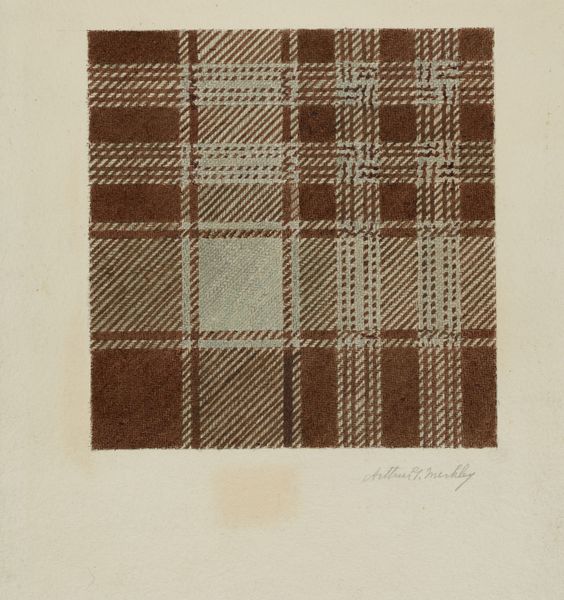
drawing, paper, pencil
#
pencil drawn
#
drawing
#
toned paper
#
paper
#
pencil
#
realism
Dimensions: overall: 44.8 x 36.3 cm (17 5/8 x 14 5/16 in.)
Copyright: National Gallery of Art: CC0 1.0
Curator: This drawing is entitled "Baby's Petticoat: Details." The artist, Ray Price, rendered it around 1937 using pencil on what appears to be toned paper. The study showcases three separate, magnified sections of a delicate baby's petticoat. Editor: The immediate sense I get is one of nostalgia and a subtle fragility. The muted tones and precise pencil work evoke a tender, almost ephemeral quality, reminiscent of childhood keepsakes carefully preserved. Curator: The realism with which Price captures the folds and textures is striking. Each ripple of fabric and intricate lace detail seems imbued with significance, holding meaning beyond the purely representational. Consider the history tied to items of clothing, especially for children. Editor: Exactly, this image prompts reflection on how clothing signifies more than just material covering. Think about the labor, often gendered and racialized, involved in making and maintaining garments, especially items like baby clothes intended for bourgeois families during the Depression era. Curator: These sartorial details certainly reflect care and a specific socioeconomic context, communicating something potent about familial aspirations. What I notice is how this everyday object transcends into a symbol. This isn’t just a piece of clothing. It embodies innocence, vulnerability...even hope for a future generation. Editor: And the presentation, so meticulously observed. The detached fragments allow us to zoom into these markers of identity, triggering questions about material culture and value placed on childhood—and its performative aesthetics—within capitalist economies. Whose childhood are we even seeing represented here? Curator: Yes, a poignant and visually striking interrogation into memory and representation... almost like reading an archive of lived experiences encoded into an artifact. Editor: Agreed. This work pushes beyond surface appeal, acting as an intriguing reminder of how the seemingly mundane can reflect a multitude of intertwined social and economic conditions.
Comments
No comments
Be the first to comment and join the conversation on the ultimate creative platform.
